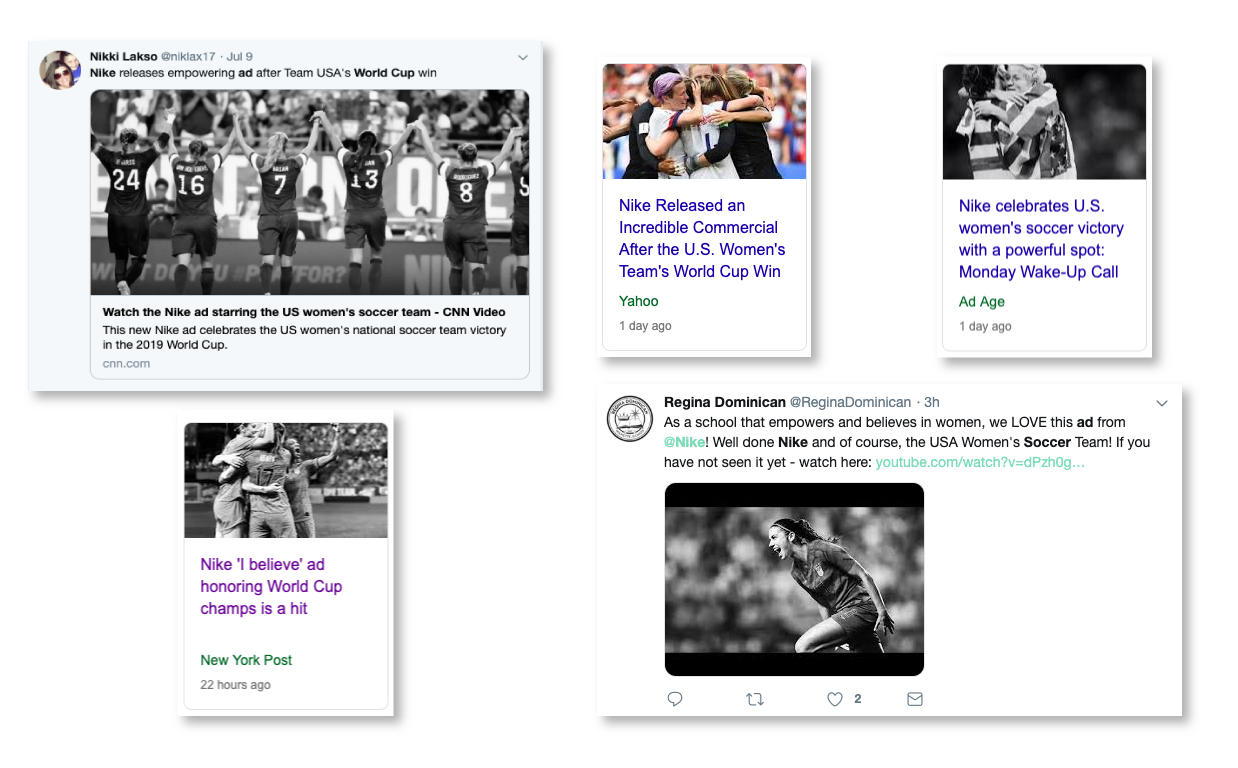
The power of emotion and empathy in advertising: a study of Nike's USA Women's World Cup advertisement

In today’s era of instant information and entertainment, it can be a challenge to capture the attention, let alone the hearts and minds, of an audience. Nike’s recent ad, following the USA Women’s Soccer team’s win of the World Cup, is a powerful example of tapping into real consumer sentiment to bridge the empathy gap and tell a story that resonates with many people today around the world.
The bold new ad, which focuses on empowering women and girls to succeed, has received considerable attention.

To gauge how consumers perceived the ad, we conducted a 10-person study (eight females and two males, aged 22-55) in which participants were asked to watch the ad, then answer a series of questions about their perception of it. Here’s what we found.
The ad evoked strong reactions
The majority of participants had strong, positive reactions to the ad that mirrored much of the media and social coverage we’ve seen. But tallying up likes, shares, and comments doesn’t capture the full range of emotions viewers felt when watching the ad.
I loved the visual. I loved seeing multiple women feeling empowered and like winners and just strong. - Female, age 40
Participants in the study were also vocal about their support of Nike taking a stand on gender equality overall—not just in sports.
It makes me believe that our voices will be heard. That we will be treated as equal, and we will break every glass ceiling. I feel like Nike is taking a stance and I absolutely love it. - Female, age 42
8 out of 10 viewers felt the ad positively impacted their perception of Nike
There’s no shortage of examples of companies taking a risk with their branding through bold advertisements, only to find them falling short with consumers. So what separates an ad that resonates from one that doesn’t?
Part of it could be attributed to the strong emotional connection companies forge with their audiences. By empathizing with their audience, brands speak to them on their terms, not the company's. In many cases, these ads end up being less about the company itself and more about a specific topic or cause. In Nike’s case, it was female empowerment, inclusivity, and equality.
That’s a message that’s top of mind for many people in today’s social climate, and Nike did a great job highlighting the US Women’s soccer team’s success as an illustration of how far women have come—and how far they can go.
As a result, the vast majority of participants said that the ad positively impacted their impression of the brand. Here’s what some of them had to say:
I’m quite impressed by the way it’s pushing the gender equality issue...that kind of raises my opinion of the Nike brand. - Female, age 55
It swayed it more to the positive. I’ve always liked Nike, but this ad is very inspirational. I’d definitely have to say that it’s made my feelings toward Nike better. - Male, age 46
The ad positively expanded the perception of Nike for 7 out of 10 viewers
In addition to appealing to consumers’ existing impressions of a brand, companies are often hoping to expand the reach of their brand to capture new markets and appeal to new customers.
It’s not something that’s easy to achieve, but it’s also hard to measure if you’re not following up with consumers directly.
Although viewers of this ad may not run right out and buy some Nike merchandise, how the ad made them feel could impact their buying decisions well into the future. Understanding how the ad resonated with consumers is valuable insight that helps measure the impact of the campaign in ways that traditional metrics can’t.
One important measurement is to understand how consumers’ perception of the brand changed, if at all, upon viewing the ad.
To measure this, we asked participants to choose three words to describe the Nike brand prior to viewing the ad. The majority of words used were either neutral or positive, including words like:
- Athletic
- Sporty
- Stylish
- Modern
Then, after viewing the ad, we asked participants if they’d change any of the words they initially used to describe the brand. The majority, 70%, said that they’d include additional words, such as:
- Inspirational
- Inclusive
- Empowering
- Strong
- Amazing
- Influential
- Supportive
- Assertive
The addition of these positive descriptors is a strong indication that the ad connected with consumers on a personal, emotional level. The ad sought to celebrate exceptional female athletes, from young girls to professionals, and extend a supportive message for gender equality in life and in sports. Although the ad doesn’t specifically “sell” anything, it effectively creates an emotional bond with its target audience.
Companies become trusted brands because they understand and connect with their customers—and potential customers—on a personal and emotional level.
By taking out any semblance of a sales pitch and making the ad all about the people that use their products, brands can connect with their customers in meaningful ways that will be measured through customer loyalty and positive brand perception.
Pulse Reports





